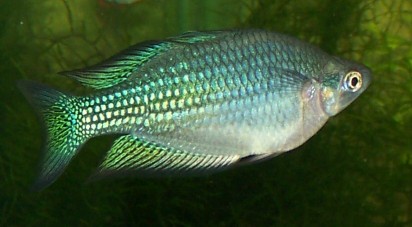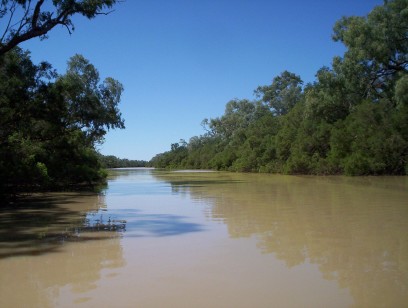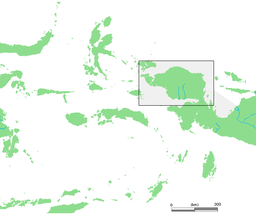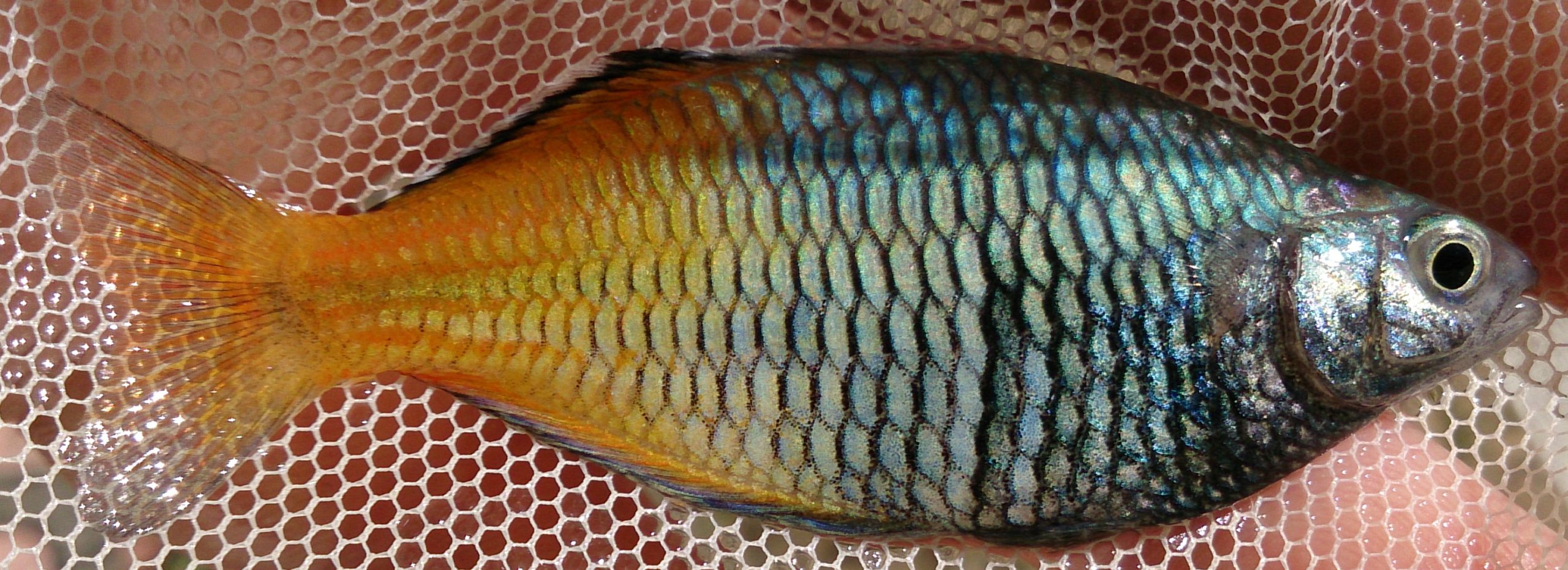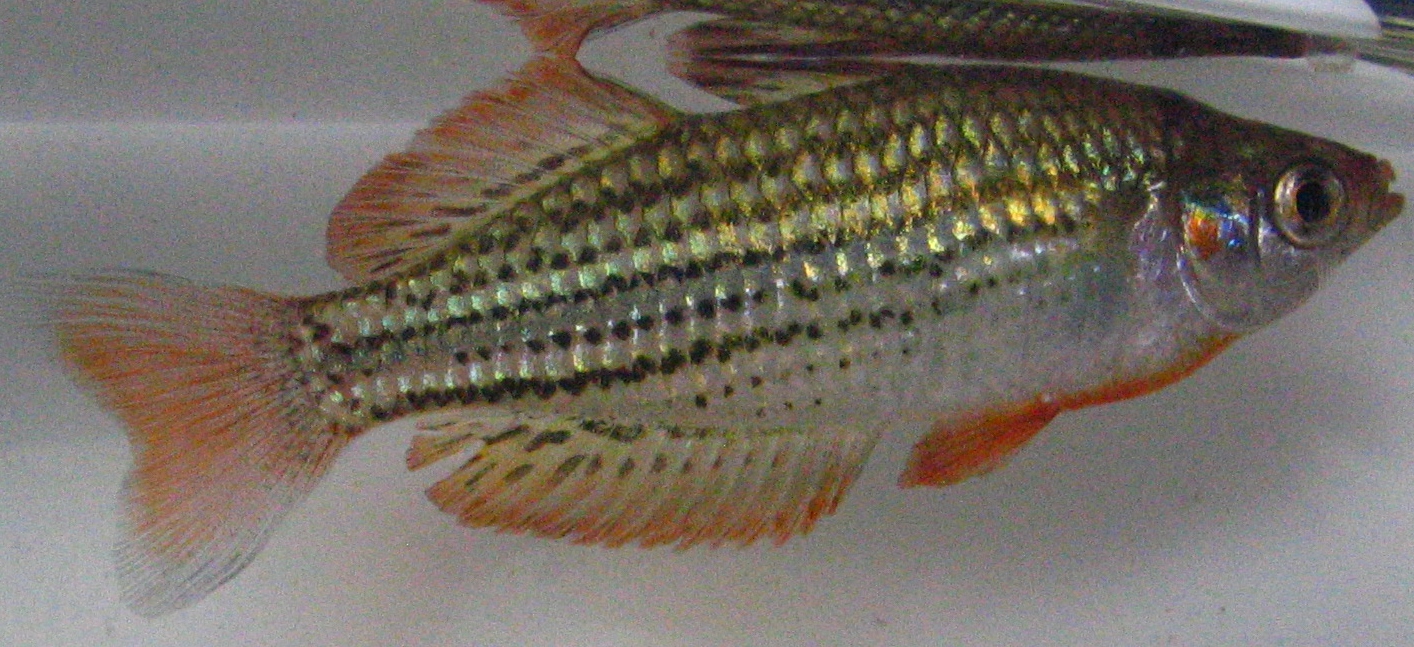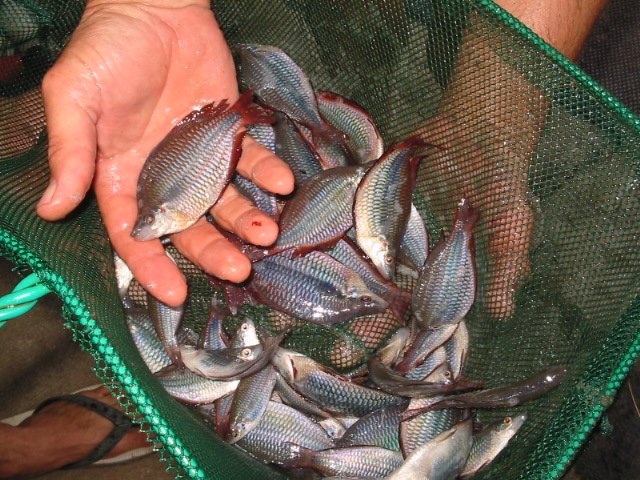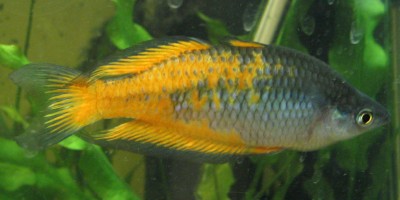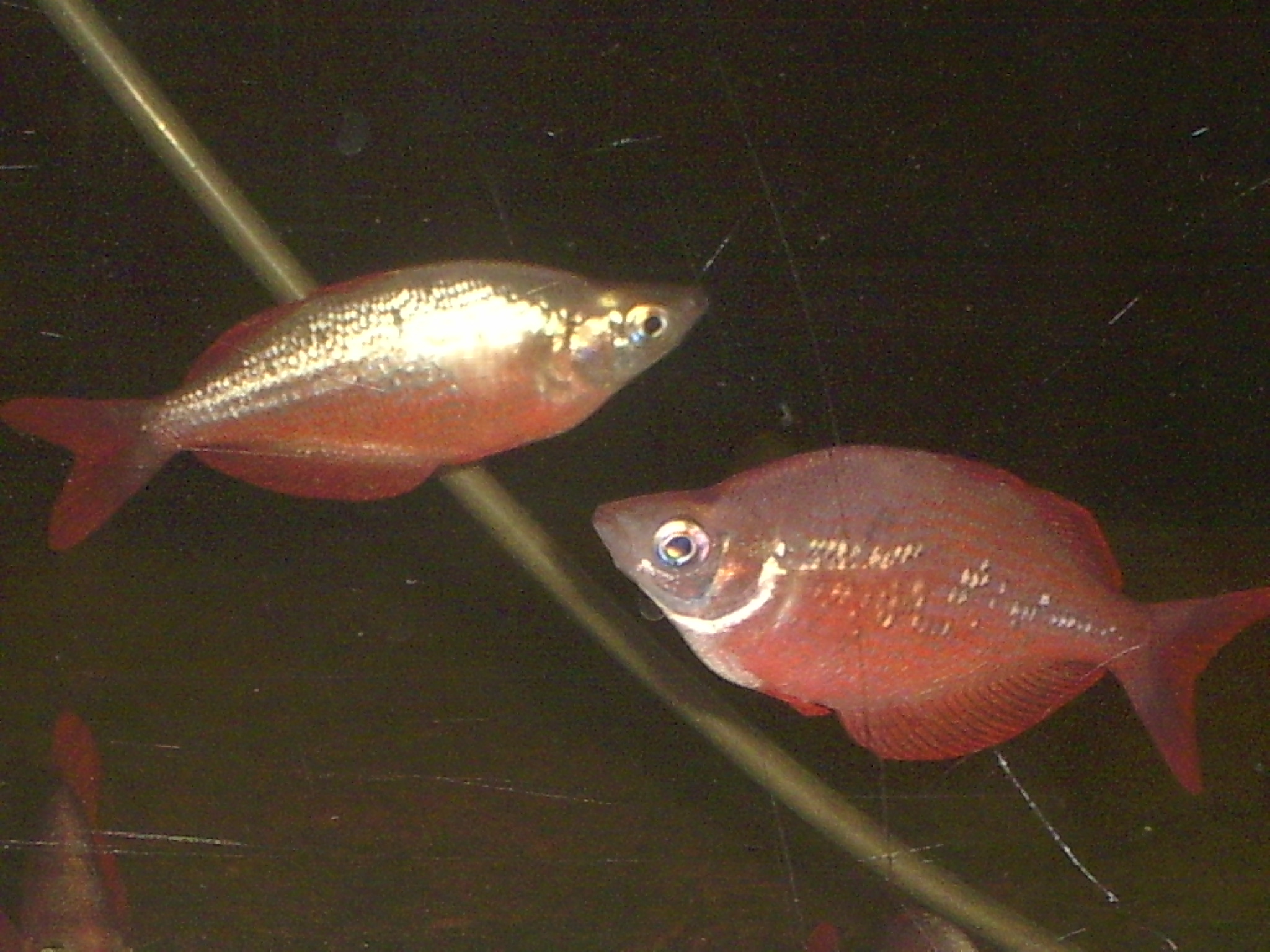Australian and New Gunea rainbows are a speciality
Australis Rainbows
This colour morph of the Australis is from south Alligator River in the Northern Territory. Although they will survive in our ponds during winter at temperatures below 15C, they much prefer to be kept at about 25C.



Blue Lace Rainbow
These fish inhabit one of the most unhospitable riverine environments in the world. Water temperatures vary wildly through-out the year. Even in a 24 hour period this region experiences enormous air temperature ranges. Overnight low can be about 12 Celsius in summer with a daytime high in the 40s. In winter overnight lows can be below freezing, while the next day can be in the comfortable 20s (Celsius). General water quality is also under pressure as the flow of freshwater is infrequent to say the least.This means, this little fellow makes a very hardy aquarium fish, able to suffer the consequences of the casual inexperienced fish keeper. A heater is not required under normal conditions for an indoor aquarium.
Melanotaenia Tatei : These fish come from the Barcoo River which is one of the rivers in Central Australia which drains inland, eventually empting into Lake Eyre.
Boesemani - Pond raised strong and healthy. (Melanotaenia boesemani)
Our Boesemani are spawned in the hatchery complex, and raised in open earth ponds.
The natural range of Boesemani is limited to a few lakes in Irian Jaya. These lakes are generally alkaline water (pH 8.0-9.0). However, they don’t seem to mind lower PHs. If you are very lucky you will witness a male behaving like a peacock while he displays his magnificent ability to change colours just like an octopus. Click the pictures for a close look.
Coen River Rainbow
One of Queensland’s popular trifasciatas, this fish comes from the Coen River which is in the central part of Cape York Peninsular. This fish usually displays a rich green colour. When in full display mode, (Usually when the morning sun hits the aquarium.), waves of colour roll across the body like waves. Once you see this display you will be hooked on this fish.

Colosseum Creek rainbow
This is a new colour form of Melanotaenia duboulayi rainbow. It comes from a creek in south central coastal Queensland. The temperature tolerance of this fish is not as wide as the Dawson rainbow, however it will survive at normal room temperature. A heater will not be necessary in the average home aquarium. This is the first commercial production of this fish.

Davies Creek Rainbow
Water temperatures here are a little lower than most rivers and creeks in this part of Australia. Davies Creek is a clear flowing stream. On our farm they experience water temperatures ranging between 13 Celsius in winter, up to 32 Celsius in summer. We try to avoid handling them in winter when the water temperature in at its lowest.
Davies Creek is in the mountains about 80 kilometres north west of Cairns, in far North Queensland.
Dawson River Rainbow
The Dawson River runs into the Fitzroy River. The Fitzroy Dawson River system is limited to Queensland. It drains a large portion of Central Queensland and empties into the sea at Rockhampton. This is right on the Tropic of Capricorn. Although this is in the tropics, the inland reaches, where our brood fish were collected, is very cold during winter. These fish are very robust and are able to tolerate very high temperatures and long periods of cooler temperatures. They regularly endure temperatures around 11C.
This fish has been grouped in as a Melanotaenia splendida splendida, but some scientists believe it probably is more related to a M. fluviatilis.
Deep Water Creek Rainbow
This spectacular rainbow comes from a small creek system in Central Coastal Queensland. They will tolerate a wide temperature range from about 11c to over 40c. It has not yet been described but is classified as a Splendida. splendida. In appearance it looks like a red form of Inornata.
Doublayi Rainbow - Kangaroo Creek
This colour form of the Doublayi rainbow has been most popular in the aquarium hobby. It has the most intense colours of all the Doublai colour morphs.
The scales are almost all metallic blue, as show in the close-up view of their scales above.
These fish come from South East Queensland and can tolerate much lower temperatures than the species of rainbows from the far northern parts of Australia. In their natural habitat the water temperatures during winter can be as low as 15C in some of the smaller water holes.
Eubanangee Swamp Rainbowfish
This rainbow fish is one of the dwarf species. It is a Maccullochi rainbow.
The area our breeders were collected from was indeed very swampy. The water was of poor quality due to the decomposition of aquatic vegetation as the swamp area reduced during the dry season. The water in the site we collected from was shallow and very small. The volume of water would not be enough to prevent the water temperature dropping over night. Therefor the fish was able to tolerate reasonable swings in water temperature. Other water quality parameters would also be changing rapidly on a daily basin. All this being considered, this little fish would be easy to keep in any home aquarium.
The other big plus is their beautiful colours. The body is a golden yellow, with a metallic sheen, topped off with several horizontal strips. The fins are red. These pictures do not do it justice at all.
Goyder Trifaciata - Strong pond raised fish
The beautiful Goyder trifaciata rainbow from Arnhem Land in the Northern Territory of Australia are one of the most beautiful of all the rainbows. It has been called the “King of the Rainbows.”
Like most Australian rainbows it is easy to keep. Not too fussy about water quality and generally a peaceful community fish.
Hidden Valley Rainbow
This beautiful, and rarely seen fish is so attractive it could easily have come from New Guinea. In the picture above it stands out even in the company of a Goyder, a Parkinsoni and a large Australis. Given our poor photographic skills, not a bad achievement!
This fish comes from the mountains between Townsville and Cairns. It appears to have two distinct colour forms. These pictures ore of the blue colour morph.
They are not a large growing rainbow, neither are they a dwarf form, but more an intermediate size. The largest fish we have seen is about 8cm.
Murray River
Murray River rainbow, or Fluviatilis comes from one of Australias largest drainage basins, the Murray-Darling River Basin.
The fish was known for many years as the crimson-spotted rainbowfish, it is now more commonly referred to as the Murray river rainbow-fish. Its scientific name is, Melanotaenia fluviatilis. The grow to a maximum length of about 9cm in aquariums. Colouration varies with sex. Males show the green/blue but females are much less colourful. The rainbow from the Fitzroy Dawson River Basin is very similar in colour. Although the breed when water temperature exceeds 20°C, they are quite happy in temperatures in the mid teens.
As with most rainbows, males perform an elaborate courtship display showing off their very best colours. The breeders used by Ausyfish originally came from South Australia, therefor they will tolerate much cooler water. In most homes in Australia, these fish will NOT require an aquarium heater. These fish are breed in our earth ponds where the water temperature in winter is usually in the mid teens, and often drops to 10 or 11 degrees Celsius. NO losses are experienced at these temperatures.
Neon Rainbow
These are excellent fish. Known as “neon” rainbow they are also known as Melanotaenia praecox. They are perfect examples of what the PRAECOX were when they first became available commercially in Australia. They are hatchery spawned, pond raised.
Because they have been raised in the pond the body shape is perfect as is the colour.
They are also strong, disease resistant fish, as a result of having to survive in a natural pond. To the best of our knowledge. Ausyfish Pty. Ltd. is the only commercial facility producing Praecox in earth ponds.
Oyster Creek rainbow
This brilliantly coloured fish is probably the northern most duboulayi rainbow.
Duboulayi rainbows are found from New South Wales to Southern Queensland. It comes from a small creek system in Central Coastal Queensland. This creek is very short, and very close to the tidal reaches of the system. They will tolerate a wide temperature range from about 11c to over 40c. In the average home a heater may not be necessary in most winters. This fish copes well in a wide PH range. Salinity in its natural habitat varies greatly, so in the aquarium it can tolerate high levels of salt. They will breed readily in the home aquarium. This is a very peaceful fish, ideal for the home community aquarium. During breeding activity the male will display its best colours.
Its colour changes dramatically as it reflects light. One moment it is green, then blue then its most spectacular colour… bright yellow.
Parkinsoni Rainbow
Parkinsoni rainbows produced at Ausyfish are the orange colour form. A number of colours are in the hobby. The main colours are orange and yellow. Although the colours are considered by some to be completely separate forms, however, when breeding these fish, it is possible for any of the colour forms to have some of the other colours in each batch.
Very young fish don’t display full colour, but as the fish age the colour gradually moves over the body of the fish, starting from the tail. The fins develop colour first. The large fish shown in these pictures are only one year old. Over the next few months the colour will cover most of the body of the fish.
Opals In My Pond
Australian native fishes have been almost secretively admired by an ever increasing number of ornamental fish keepers world-wide. The most famous of these are the Rainbow fish. Australia is famous for it’s opals and the Australian Rainbow fish is the opal among the world’s aquarium fish. Like the opal the colours of these Rainbow fish are sometimes bold, and sometimes beautifully subtle.
One of Gunther’s pictures. Melanotaenia duboulayi – Oyster Creek.
184 pages and over 300 images. All fish are shown in prime condition with expanded fins.
Australian rainbows are also ideal for mosquito control. It is possible to cause the extinction of one of our rainbows by stocking your garden pond or farm dam with the wrong colour morph, even if it is the correct species as advised by authorities.
A wide variety of Australia’s native fish are suitable for use as aquarium fish. Many of our Grunters, Gudgeons, Blue-eyes, and Hardyheads make ideal aquarium specimens.
The smallest of these are the Blue-eyes, ranging from a little over a centimetre to around 4 centimetre. The Grunters best suited for the large fish enthusiast. The Silver Perch being one of the best known of the Grunters in some parts of the world. However the Coal Grunter, a smaller species, known by a lucky few, usually only reaches about 15 cm in the aquarium. This fish shows a beautiful gold and black chequered pattern as a juvenile, gradually changing to a gold /black sandy appearance as it matures.
Below left a one year old coal grunter, right baby coal grunter.
Commercial culture techniques for Australia’s aquarium fish are as wide ranging as the types of fish. Some fish will simply reproduce in small ponds, while others require hormone induction. Many of the Rainbows are quite co-operative and a small pond of around 10 by 20 meters will produce thousands of 5cm fish. Other varieties of Rainbows need to be spawned in aquariums, or a hatchery. The Grunters are the most difficult, most needing hormones to induce spawning. The beautiful small Blue-eyes will also breed in aquariums, but after some trial and error these too can be coaxed into reproducing in earth ponds.
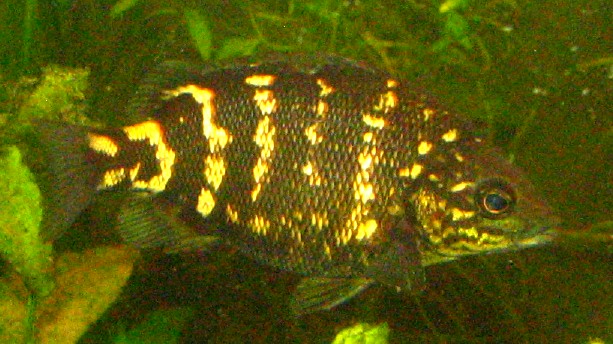


Salmon Red Rainbows - Incisus
It is common for males to have little colour until they have settled into a tank. Their colour, and the intensity, and the shade of the red can also vary considerably, depending on mood and lighting. Females can also have some colour variation. They can appear silver/grey to coppery, but never red.
Streets Creek Rainbow
The fish pictured here are display size fish.

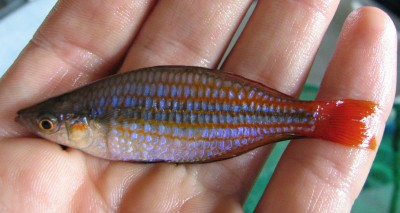

Upper Katherine River Australis

This very rare fish now available from Ausyfish !

This recent discovery, made by Dave Wilson, a veteran native fish collector from the Northern Territory, is a unique colour morph of the australis rainbow. Their natural habitat is only accessible by helicopter. These fish have finally reached the general hobby.

This australis is very different from other australis seen in the hobby. In these pictures they appear very dark fish, but as with most rainbows they display beautiful colours as they move through the water. A rich crimson body colour with deep crimson stripes are highlighted by strong black fins. To top off an already beautiful fish a reflective purple adorns the dorsal area of the fish and highlights the fins. In the picture on the right the Upper Katherine rainbow stands out from the crowd.
Wrights Creek Rainbowfish
This is a Splendida splendida from the Coastal Drainage in Far North Queensland.
This fish is very easy to care for not too fussy about water quality. The region it comes from has experienced considerable urban intrusion. The creeks where it survives are reasonably polluted, yet it survives and breeds. It does prefer warmer water but will survive for short periods at about 15 celsius. Best at 25 celsius when it will show its best colours.


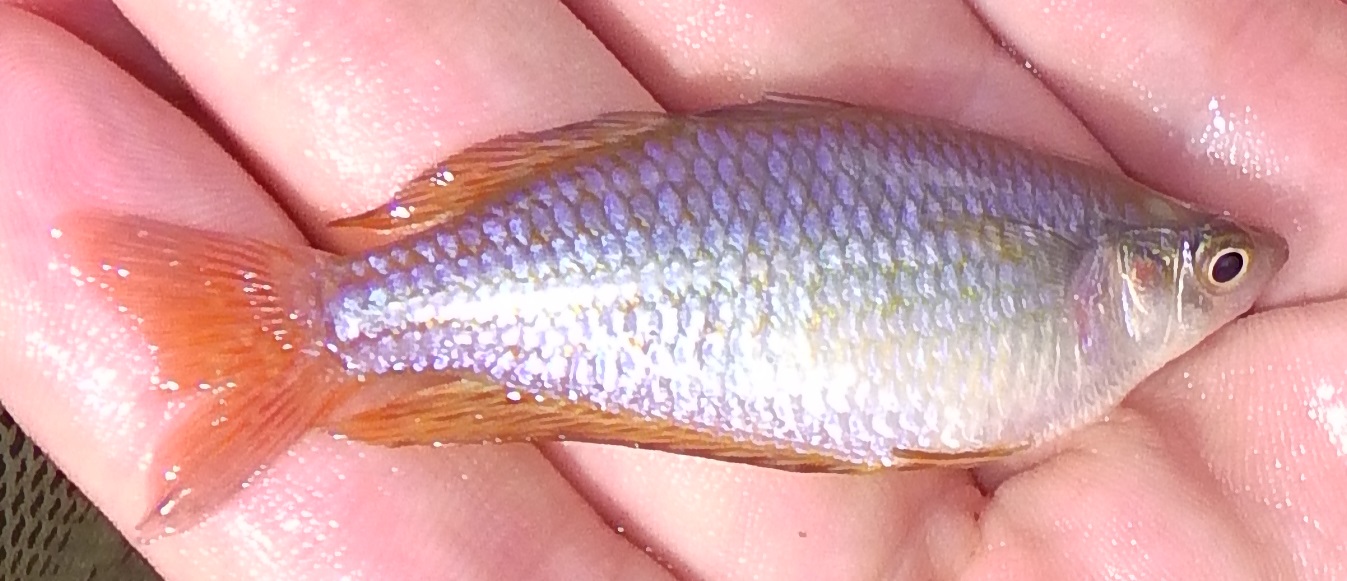
Breeding Rainbows
In their natural habitat, most rainbows choose a spawning site that has protection for their eggs, such as weed beds or some sort of soft matted structure. At Ausyfish we use a number of culture methods for rainbow fish.
By far the most commonly used culture method for rainbows is “spawning mops”. These mops are made of synthetic wool. A variety of colours have been used. No particular colour seems to be preferred but somehow we are more comfortable with natural colours. Green the colour we prefer.
Rainbows spawn every day while they are in condition and the temperature is within the preferred range of the variety. We have conducted research to see what changes there would be if the mop was removed for a period of time, one or two days. The results showed that there was no increase in the number of eggs that would be found on the mop once the mop was re-introduced. The fish spawned on bare glass when a mop was not present.
Rainbows show their best colours while in spawning condition. While actually involved in spawning activity their colours are absolutely stunning !



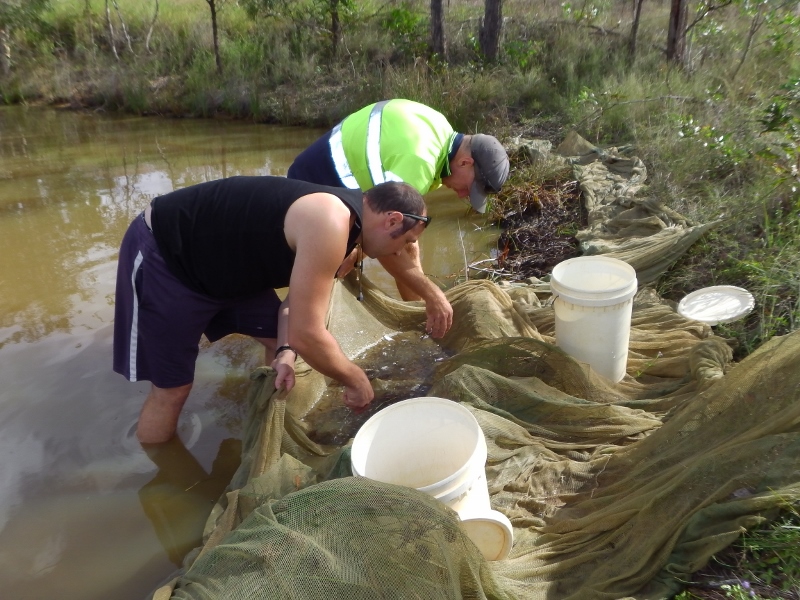
 Request a Quote!
Request a Quote!
